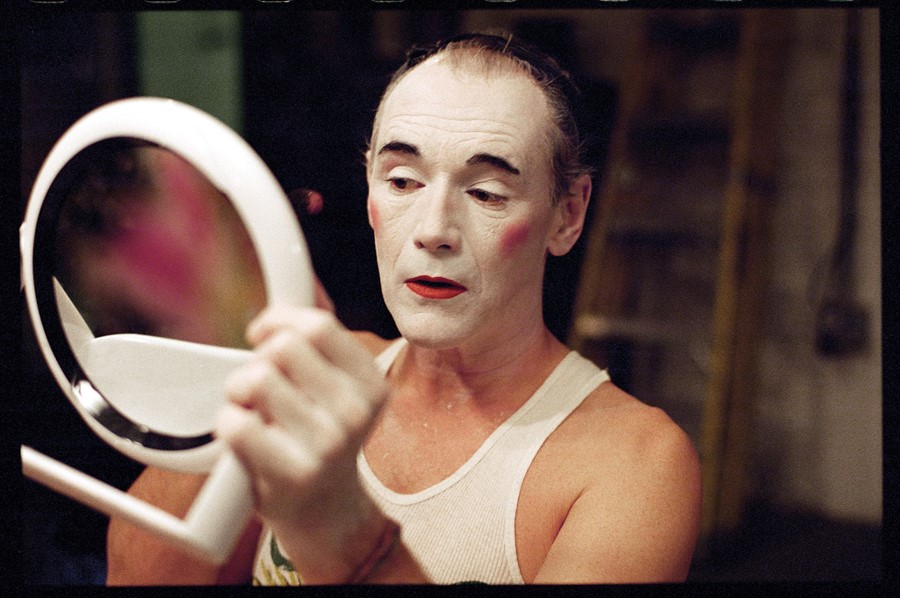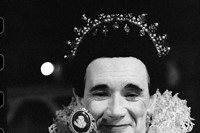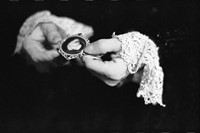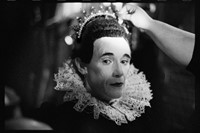British photographer Mary McCartney stepped behind the scenes at Broadway's Belasco Theatre to capture the actor as he transformed into Shakespeare's Olivia
Backstage at the theatre; a silent, sparsely lit space, simmering with anticipation. There’s electricity in its stillness, in the seconds before the players cross the line from dark to light, bringing their characters to life. This was the environment photographer Mary McCartney found herself documenting one December night at the Belasco Theatre on Broadway. She had been allowed unprecedented access to Mark Rylance – the Oscar, BAFTA, Olivier and Tony award-winning actor – as he prepared to become Olivia, the grieving noble woman of Shakespeare’s Twelfth Night.
Believing she was only to photograph Rylance getting ready, McCartney was stunned when he told her she could shoot backstage during the performance. With just her Leica camera and some film, McCartney set to work, capturing – without flash – natural, behind-the-scenes moments amongst the all-male company.
From pre-performance make-up to Rylance’s intermission letter-writing, the return from the curtain call, and his meditative contemplation after it, McCartney’s shots, which make up photobook Twelfth Night 15.12.13, show how a master of his craft prepares for transformation; how a company – brought together by a shared passion for theatre – pass the time together away from the footlights; and how the collaboration of professionalism and friendship enabled a story, 400 years old, to be so vibrantly and authentically brought back to life.
Here, we ask McCartney to recall her memories of the night…
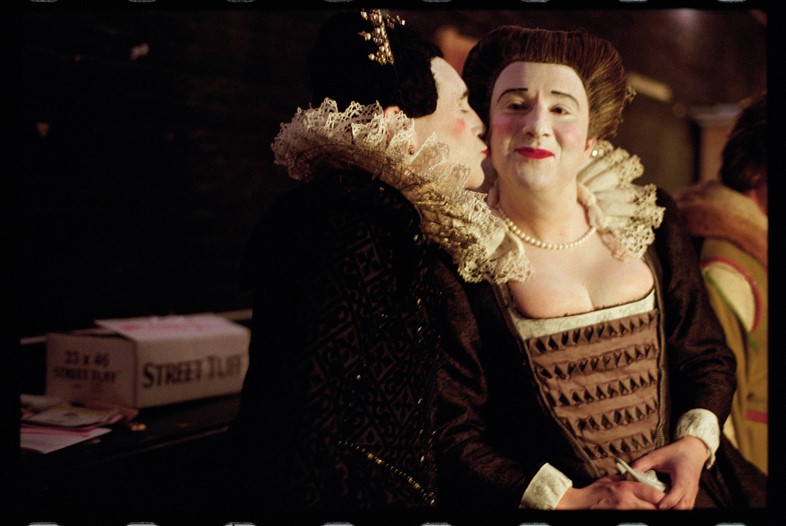
On gaining access to Mark Rylance…
“I had seen the play in London. I loved the transformation people go through for a performance, and for their art. So I approached Mark and his wife [Claire van Kampen], who was the musical director, and said: ‘Would Mark allow me to photograph him, just as he’s putting on his make-up and his outfit, and then I’ll leave?’ I’d heard he didn’t really let people backstage to do that, but for some reason we got on really well and he allowed me to.
“By the time we did it, the show was in New York. After he’d put on his make-up, I was getting ready to leave and he said: ‘Do you want to stay during the performance and take pictures backstage?’ It was very spontaneous, which made it very exciting and daunting.”
On Rylance’s comments that ‘there is an aspect of psychological life and death’ to being backstage ahead of a performance…
“In each performance you’re giving so much to the audience. If something goes wrong then you’re mortified. But if it goes great, then you’re fed by the audience’s applause and the fact that they’re enjoying it. It’s similar to photography. I shoot on film. If it goes wrong, and the film doesn’t come out and it’s too dark and they’re blurry, then that’s a drama too. Everything is in that moment. If you don’t get it right, you won’t have what you put all that energy into producing.”
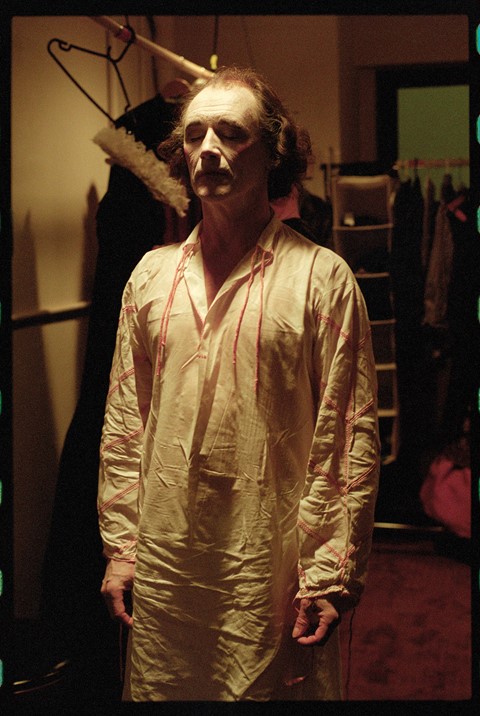
On Rylance preparing for his role…
“He was very focused. We didn’t chitchat or talk, he just got on with his process and I observed him. He is very collaborative, but also very much himself. He didn’t pose for me. In the beginning of [my] book, when he’s putting on his make-up, you can see him. I loved the fact he didn’t have a make-up artist. There’s one picture when he looks up at me, and he smiles – that’s him becoming Olivia. At the end of the play when he comes off stage, he decompresses and meditates for 10 minutes. He gets rid of his character. I could see a real transition from Mark, to character, back to Mark.”
On shooting mainly in black and white, and without flash…
“I grew up inspired by black and white photography – Diane Arbus and Curtis. In situations like this it’s quite nice not to have all of the information, not all of the colour, so the viewer can fill in the gaps. It makes the viewer and the photograph work together. Then when you get those splashes of colour, it has more impact.
“I didn’t use a flash, I used available light. It was really low light backstage, practically candlelight. That’s why I think the quality of the pictures looks so good, because I had to work so hard. I pushed the film up to 1600 ISO; I think that makes the photographs look more painterly. I really thrive on available light, and looking at what I’m given. That was part of what excited me about the project.”

On her favourite picture…
“I love the ones of Mark as Olivia, where he’s looking at me, but I also love the colour one of the guys [in costume] playing ping pong downstairs. I think from a comical point of view, it’s so unexpected. It’s got a lot of energy.”
On her love of photography…
“I was always interested in photography. I grew up around it because my mum [Linda McCartney] was a photographer. I didn’t think I’d become one myself but I always thought I would work in photography. And then [once] my mum invited me to edit her pictures. Her contact sheets were like a diary of her life. The pictures really connected with me. And that made me say to her: ‘I think I’m going to try to become a professional photographer.’ She was really encouraging, both my parents were. She gave me a Leica, and I just went for it.”
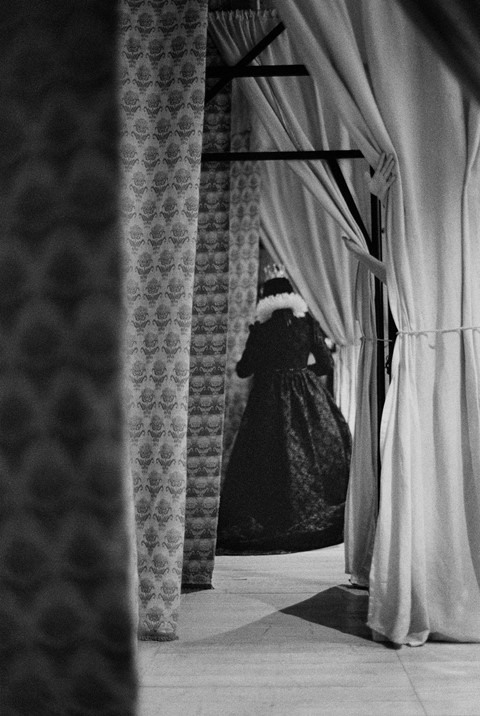
Twelfth Night, 15.12.13 by Mary McCartney is out now, published by HENI Publishing.
